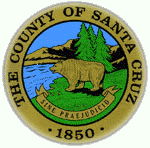Focus on the Bay: Salmon and Water Politics
Focus on the Bay:
Salmon and Water Politics
Commercial salmon fishing is closed in the Monterey Bay this year for most of June and July, and is severely limited when the season is open; primarily because of struggles for water in the upper part of the Klamath River.
Chinook salmon, also known as king salmon, have challenging lives. After spending several years avoiding predators in the ocean, adults swim long distances upriver to spawn by depositing eggs in the riverbed. Dams, water diversions, other barriers, ocean conditions, or drought conditions can hinder spawning migrations. When migrating salmon reach the spawning grounds, the salmon look for areas with clear, cold, flowing water and clean gravel. These habitat conditions help ensure that the salmon’s eggs get adequate oxygen. Several years ago, Northern California and Southern Oregon experienced a drought and water management agencies restricted the release of water from dams on the upper part of the Klamath River. The low river flows caused several large fish kills (of both juveniles and adults) in the Klamath River and now Chinook salmon populations from the Klamath River are at all-time lows.
The majority of the salmon we see here in Monterey Bay come from healthy stocks of fish in the Sacramento River. Salmon from many rivers co-mingle in the open sea, however; and Monterey Bay anglers have the potential to catch fish from the Klamath salmon stocks. The Pacific Fishery Management Council (the primary management agency for marine fishes) has a “weak stock management” policy that restricts fishing on abundant stocks when severely depressed Klamath fall Chinooks may also be found -- an area roughly extending from Northern Oregon past Monterey Bay. Because of the fishery management policies, the economic losses to the commercial salmon fishery will be high this year, but recreational anglers will fare better, as the Pacific Fishery Management Council opted for less restrictive regulations on the recreational salmon fishery along our coast.
Local scientists Carlos Garza and Eric Anderson from NOAA’s Southwest Fisheries Science Center in Santa Cruz have begun testing genetic methods that may allow expanded fishing opportunities, even when some Klamath salmon are present. Their genetic tests can rapidly identify where captured fish came from – in the hope that the results can be used to adjust fishery regulations to minimize harvest of Klamath populations and maximize catches of Sacramento River fish. Results of their initial study indicate that a very small proportion of fish caught in Monterey Bay are from the Klamath Basin, whereas about 92% are from the abundant Central Valley Fall Chinook population. This type of rapid analysis can potentially transform the way that salmon fisheries are managed in California, by allowing adjustment of regulations during the fishing season, so as not to exceed specific harvest impacts on populations of conservation concern, while maximizing fishing effort on abundant populations.

